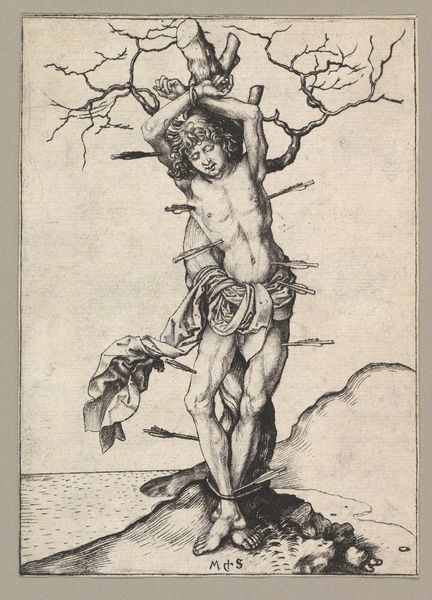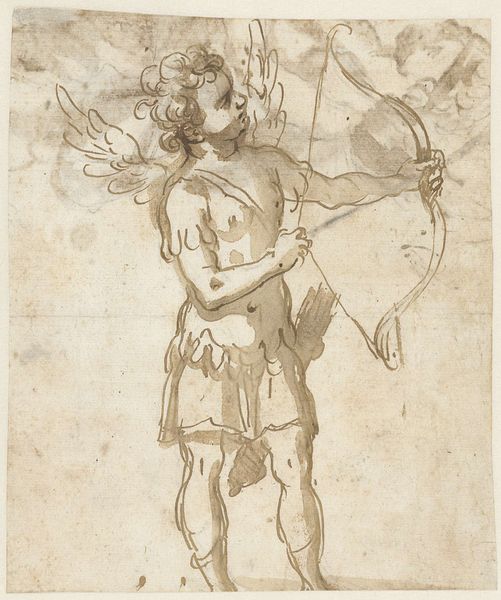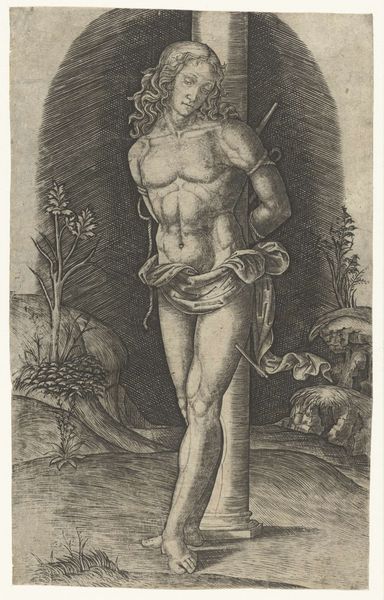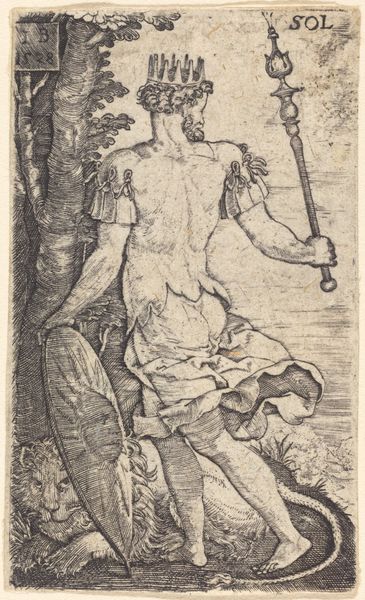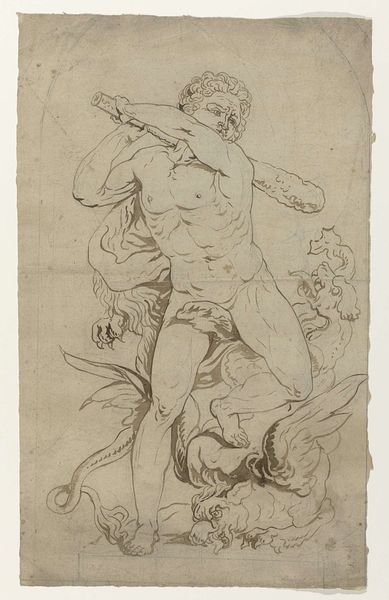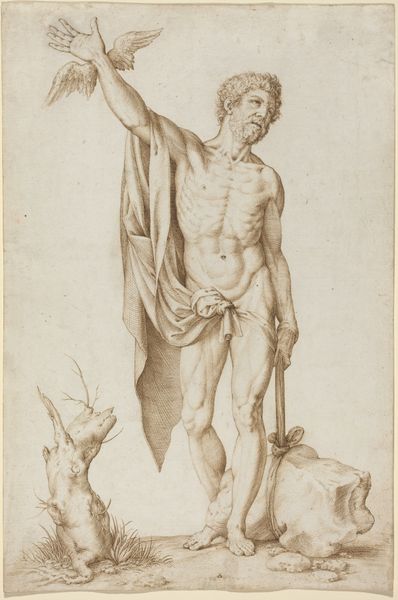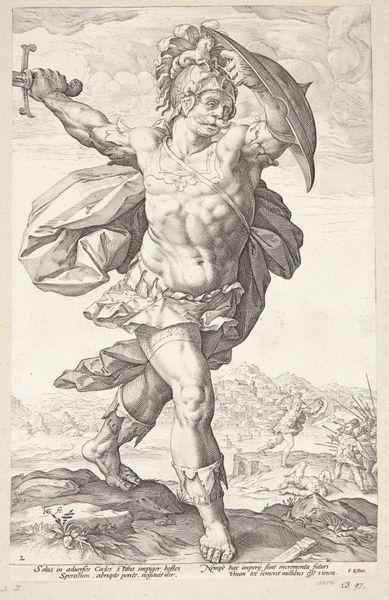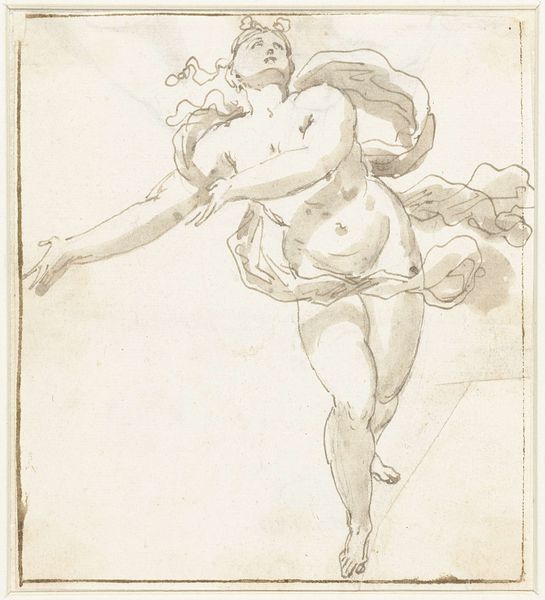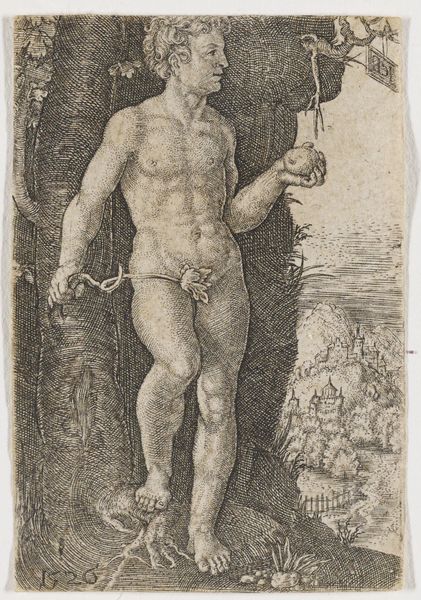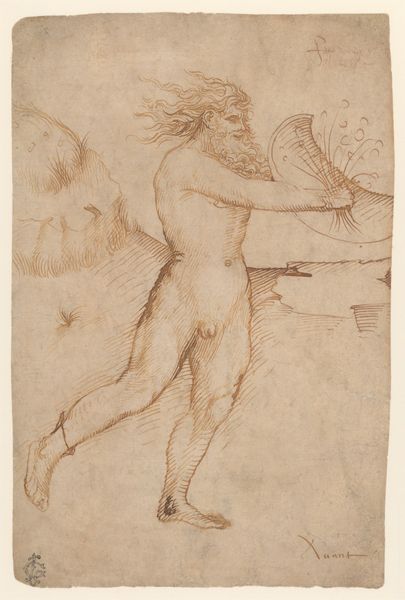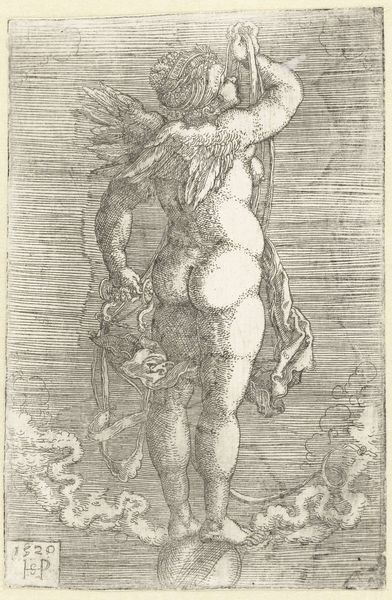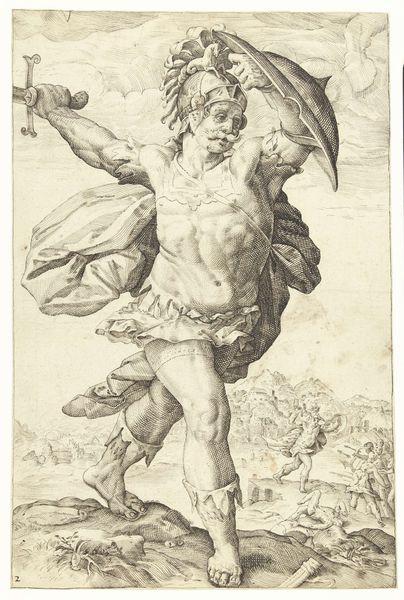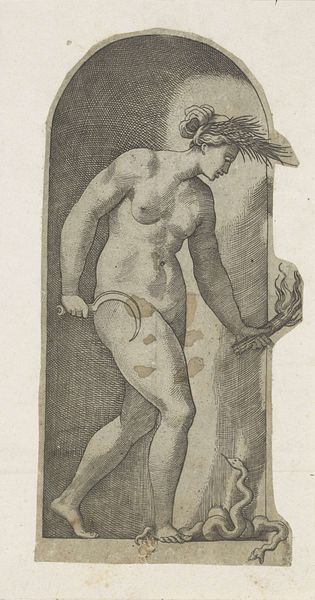
print, etching, engraving
#
medieval
# print
#
pen sketch
#
etching
#
figuration
#
ink drawing experimentation
#
history-painting
#
northern-renaissance
#
nude
#
engraving
Dimensions: height 159 mm, width 113 mm
Copyright: Rijks Museum: Open Domain
Curator: This engraving is "Saint Sebastian" by Martin Schongauer, dating back to around 1480-1490. It's part of the Rijksmuseum's collection. Editor: My immediate reaction is a stark vulnerability, emphasized by the figure's nudity and the harsh, angular lines defining the composition. Curator: Let’s examine that angularity. The medium here, engraving, lends itself to those sharp, deliberate lines. Schongauer's process involves meticulously incising the metal plate. You can clearly discern his use of cross-hatching to build tonal depth. Editor: Precisely! The linear network creates volume but it’s more than representational. Notice the consistent angle and density of the lines—there's an underlying rhythm governing their placement, structuring our gaze. The strategic density is clearly used to convey volume as well. Curator: The subject matter of Sebastian has strong associations to social and cultural impact through religious history. Remember that Saint Sebastian was often invoked during periods of plague, because it was believed the arrows were symbolic of divine punishment. Editor: True, but aesthetically, the arrows create dramatic diagonals slicing through the verticality of Sebastian's form and the tree. That disruption generates a visual tension further enhanced by the limited grayscale tones. Curator: Thinking about Schongauer's workshop, the labour involved in creating this multiple through printmaking is considerable. It makes the image more accessible to a broader audience. Editor: I'm compelled by the engraving. The use of light, line, and composition to create this depiction of emotional anguish are quite effective, despite its stark simplicity. Curator: It demonstrates the power of printmaking at the time. It offered a potent means of disseminating religious and artistic ideas, even for this small picture, created centuries ago. Editor: Yes, in this analysis, there are many points in considering how its physical elements evoke and convey the emotional tenor of this figure’s ordeal.
Comments
No comments
Be the first to comment and join the conversation on the ultimate creative platform.
